Base de Datos de las Especies de Galápagos
La Base de Datos de las Especies de Galápagos comparte la información de las especies de nuestras Colecciones de Historia Natural.
Geospiza fuliginosa
Pinzón Terrestre Chico, Pinzón tierrero pequeño, Small Ground Finch
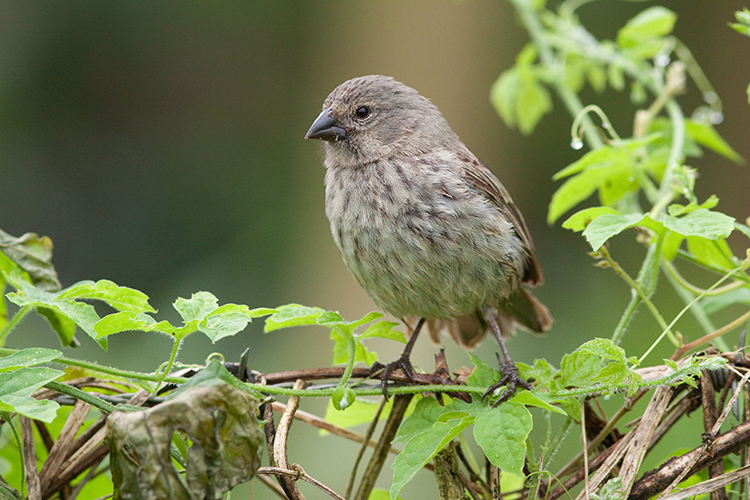


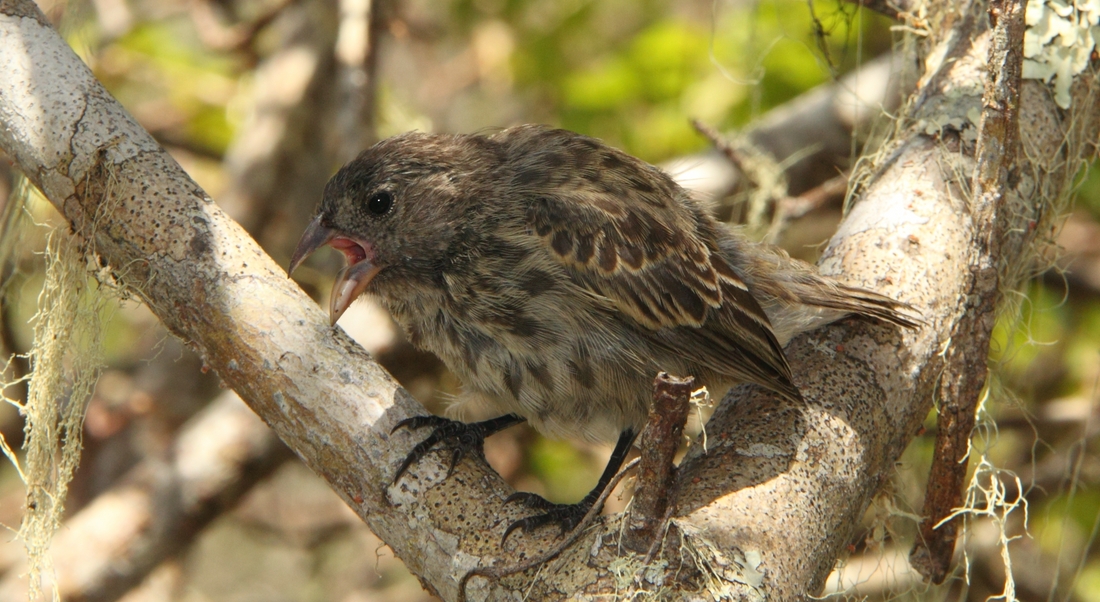
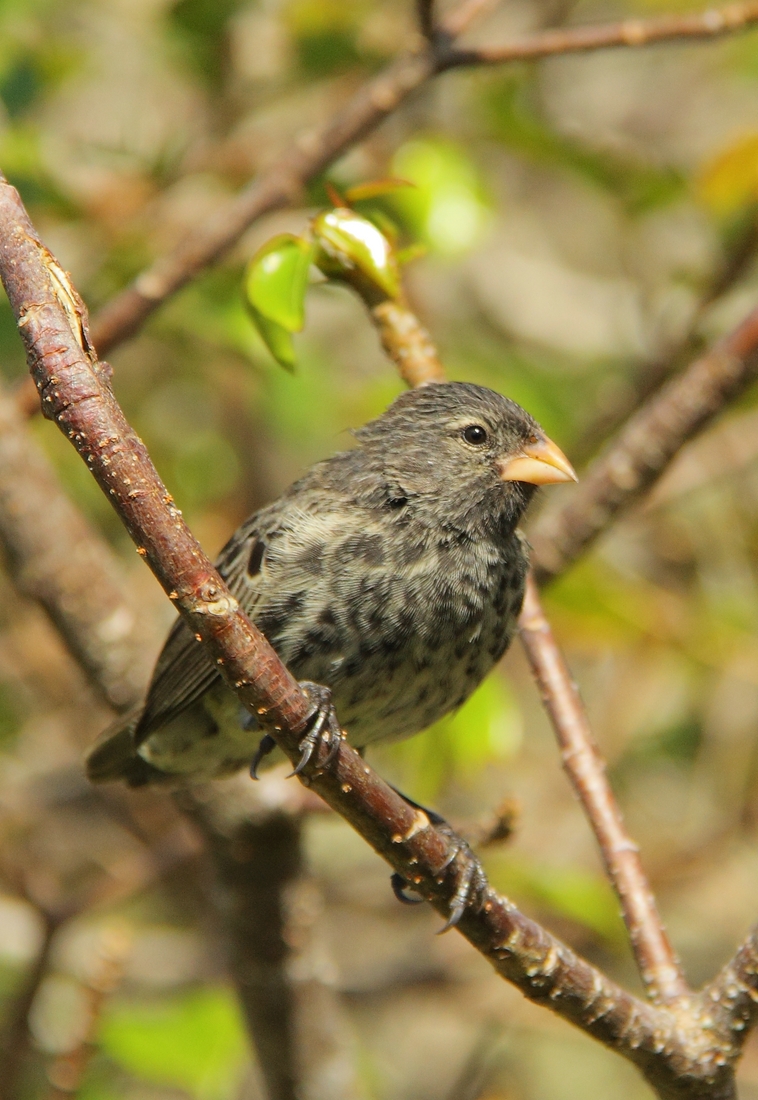
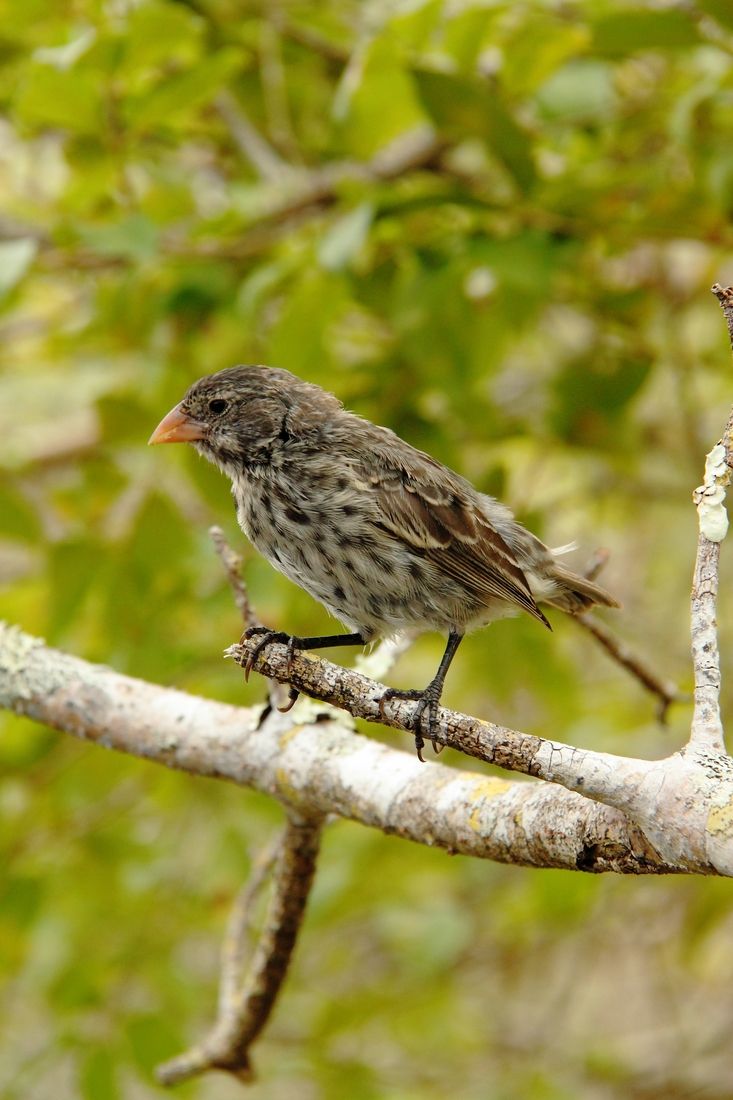

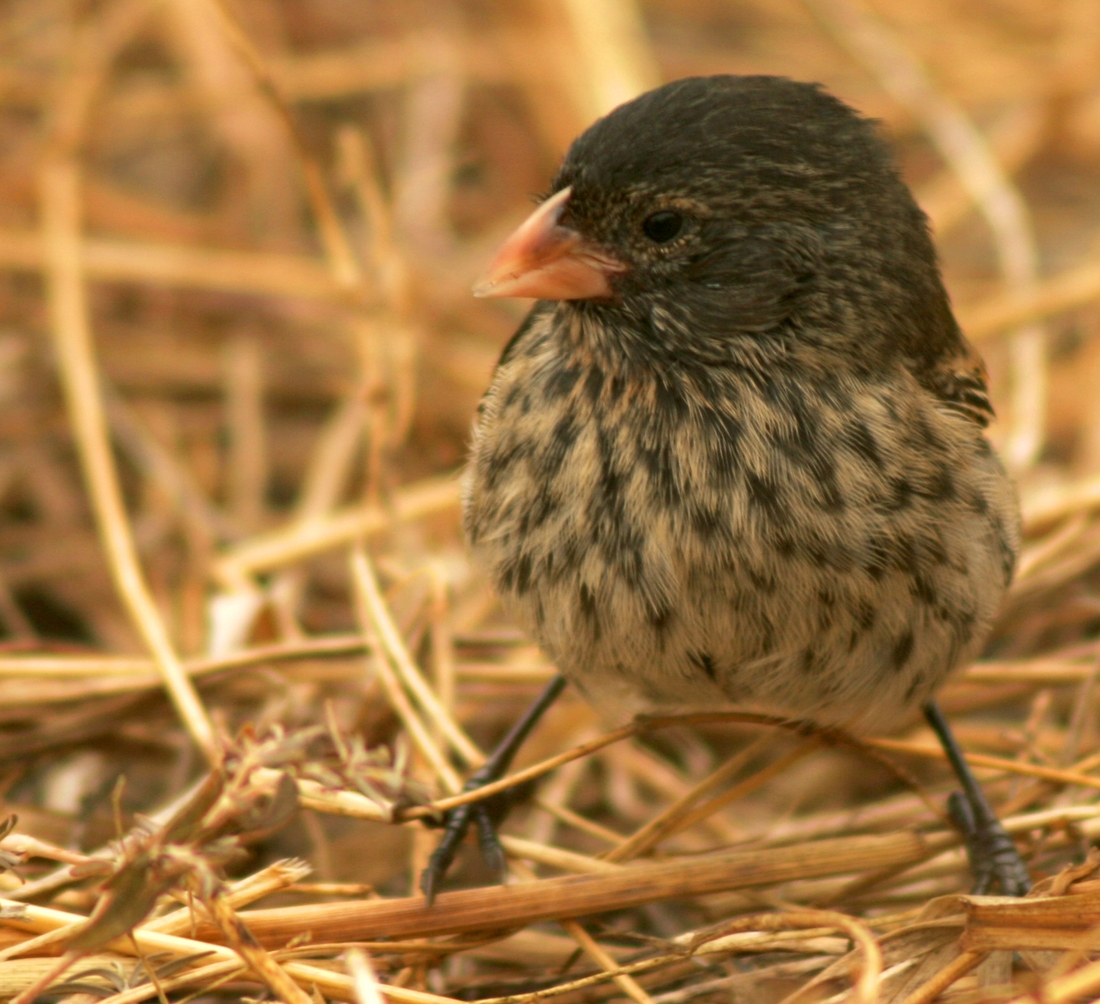


Amenazas Se conoce que se encuentra afectado por la mosca parasite Philornis downsi, la cual causa alta mortalidad de pichones, y por viruela aviar. Las ratas introducidas probablemente son la segunda causa de mortalidad. Información adicional Venegas, L.
Dominio
Eukaryota
Reino
Animalia
Filo
Chordata
Clase
Aves
Orden
Passeriformes
Familia
Thraupidae
Género
Geospiza
Especie
fuliginosa
Categoría de taxón: Aceptado
Origen del taxón: Endémica
Preferencia de zona de altitúd en Galápagos: Zona costera - zona húmeda
Preferencias de habitat: Muy común, principalmente se encontraba en las zonas seca y transición, pero con la dispersión de gramíneas invasoras, se encuentra ahora anidando en todas los pisos climáticos.
Preferencias de alimentación: Se alimenta de flores (posiblemente un vector importante en la dispersión de polen), frutos, semilas, arthropodos, y fue observado buscando parásitos externos de iguanas y de tortugas las que extienden tanto el cuello como las patas para ese propósito.
Papel trófico: Omnívoro
Modalidad de reproducción: Exclusivamente sexual
Biología reproductiva: Los machos se exhiben en frente de un nido en forma de domo construido frecuentemente en cactus Opuntia. Hembras incuban solas 3-5 huevos, ambos alimentan los pichones.
Mapa de ocurrencias de colección o registros de observación para esta especie en nuestra base de datos de colecciones.
Distribución: La especie se encuentra en todas las islas excepto Genovesa (posiblemente por competencia con el pinzón G. acutirostris), Darwin y Wolf (G. septentrionalis).
- Wiedenfeld, D.A. (2006) Aves, the Galapagos Islands, Ecuador. Check List 2006 2(2): 1-27.
- Jiménez-Uzcátegui, G. Milstead, B., Márquez, C., Zabala, J., Buitrón, P., Llerena, A., et al. (2007) Galapagos vertebrates: endangered status and conservation actions. Galapagos Report 2006–2007. Charles Darwin Foundation, Puerto Ayora, p. 104–110.
- Swash, A. Still, R. (2000) Birds, mammals, and reptiles of the Galapagos Islands, an identification guide. Yale University Press, New Haven, Connecticut, USA, 168 pp.
- Harris, M.P. (1973) The Galápagos avifauna. Condor 75(3): 265-278.
- Salvin, O. (1876) On the avifauna of the Galápagos Archipelago. Transactions of the Zoological Society of London 9: 447-510.
- Sundevall, C.J. (1871) On birds from the Galápagos Islands. Proceedings of the Zoological Society of London 1871: 124-129.
- Castro, I. Phillips, A. (1996) A Guide to the Birds of the Galapagos Islands. Christopher Helm Publishers Ltd., London.
- Fessl, B. Tebbich, S. (2002) Philornis downsi - a recently discovered parasite on the Galápagos archipelago - a threat to Darwin's finches? Ibis 144: 445-451.
- McQuistion, T.E. Wilson, M. (1989) Isospora geospizae, a new coccidian parasite (Apicomplexa: Eimeriidae) from the small ground finch (Geospiza fuliginosa) and the medium ground finch (Geospiza fortis) from the Galapagos Islands. Systematic Parasitology 14(2): 141-144.
- Smith, E.A. (1877) Mollusca. In: Günther, A.: Account of the zoological collections made during the visit of H.M.S. "Petrel" to the Galapagos Islands. Proceedings of the Zoological Society of London (1877): 69-73, 91-93.
- Thiel, T. Whiteman, N.K., Tirapé, A., Baquero, M. I., Cedeño, V., Walsh, T., Jiménez-Uzcátegui, G. & Parker, P.G. (2005) Characterization of canary pox-like viruses infecting endemic birds in the Galapagos Islands. Journal of Wildlife Diseases 41(2): 342-353.
- Swarth, H.S. (1931) The Avifauna of the Galapagos Islands. Occ. Pap. Calif. Acad. Sci. 18: 1-299.
- Galligan, T.H. Kleindorfer, S. (2009) Naris and beak malformation caused by the parasitic fly, Philornis downsi (Diptera: Muscidae), in Darwin's small ground finch, Geospiza fuliginosa (Passeriformes: Emberizidae). Biological Journal of the Linnean Society 98: 577-585.
- Dudaniec, R.Y. Kleindorfer, S. & Fessl, B. (2006) Effects of the introduced ectoparasite Philornis downsi on haemoglobin level and nestling survival in Darwin’s Small Ground Finch (Geospiza fuliginosa). Austral Ecology (2006) 31, 88–94, doi:10.1111/j.1442-9993.2006.01553.x
- Fessl, B. Kleindorfer, S. & Tebbich, S. (2006) An experimental study on the effects of an introduced parasite in Darwin’s finches. Biological Conservation 127(1): 55-61.
- Lindström, K.M. Dolnik, O., Yabsley, M., Hellgren, O., O’Connor, B., Pärn, H. & Foufopoulos, J. (2009) Feather mites and internal parasites in small ground finches (Geospiza fuliginosa, Emberizidae) from the Galapagos Islands (Ecuador). Journal of Parasitology, 95(1): 39–45.
- O'Connor, B.M. Foufopoulos, J., Lipton, D. & Lindström, K. (2005) Mites associated with the small ground finch, Geospiza fuliginosa Passeriformes: Emberizidae), from the Galápagos Islands. J. Parasitol. 91(6): 1304-1313.
- Lindström, K.M. Foufopoulos, J., Pärn, H. & Wikelski, M. (2004) Immunological investments reflect parasite abundance in island populations of Darwin’s finches. Proc. R. Soc. Lond. B 271: 1513–1519.
- Fessl, B. Couri, M.S. & Tebbich, S. (2001) Philornis downsi Dodge & Aitken, new to the Galapagos Islands (Diptera, Muscidae). Studia Dipterologic 8: 317-322.
- Kleindorfer, S. Dudaniec, R.Y. (2006) Increasing prevalence of avian poxvirus in Darwin’s finches and its effect on male pairing success. Journal of Avian Biology 37: 69-76.
- Jiménez-Uzcátegui, G. Betancourt, F. (2008) Avifauna vs automotores. Informe Galápagos 2007-2008. FCD, PNG & INGALA. Puerto Ayora, Ecuador. p. 111–114.
- Lincango, M.P. Causton, C.E., Calderón-Álvarez, C. & Jiménez-Uzcátegui, G. (2011) Evaluating the safety of Rodolia cardinalis to two species of Galapagos finch: Camarhynchus parvulus and Geospiza fuliginosa. Biological control 56: 145-149. http://dx.doi.org/10.1016/j.biocontrol.2010.10.006
- Bisconti, M. Landini, W., Bianucci, G., Cantalamessa, G., Carnevale, G. Ragaini, L. & Valleri, G. (2001) Biogeographic relationships of the Galapagos terrestrial biota: parsimony analyses of endemicity based on reptiles, land birds and Scalesia land plants. J. Biogeogr. 28: 495-510.
- Guerrero, A. Tye, A. (2009) Darwin's Finches as seed predators and dispersers. The Wilson Journal Of Ornithology 121 (4):752-764, 2009
- Blake, S. Wikelski, M., Cabrera, F., Guézou, A., Silva, M., Sadeghayobi, E., Yackulik, C. & Jaramillo, P. (2011) Gardeners of Galapagos? Seed dispersal by giant tortoises. Journal of Biogeography (submission): 1-41.
- Alatalo, R. V. (1982) Bird Species Distributions in the Galapagos, Ecuador, and Other Archipelagoes: Competition Or Chance?. Ecology 63 (4): 881-887
- Grant, P.R. Grant, B.R. (1997) Mating patterns of Darwin's Finch hybrids determined by song and morphology. Biological Journal of the Linnean Society 60:317-343.
- Grant, B.R. Grant, P.R. (1996) High survival of Darwin's finch hybrids: effects of beak morphology and diets. Ecology 77:500-509.
- Stern, D. Grant, P. (1996) A phylogenetic reanalysis of allozyme variation among populations of Galápagos finches. Zoological Journal of the Linnean Society 118:119-134.
- Petren, K. Grant, P., Grant, B. & Keller, L. (2005) Comparative landscape genetics and the adaptive radiation of Darwin’s finches: the role of peripheral isolation. Molecular Ecology 14:2943-2957.
- Zylberberg, M. Lee, K., Klasing, K. & Wikelski, M. (2012) Increasing avian pox prevalence varies by species, and with immune function, in Galápagos finches. Biological Conservation 153:72-79.
- Zylberberg, M. (2014) Galapagos ground finches balance investment in behavioural and immunological pathogen defences. Ibis 156:615-626.
- Vagvolgyi, J. Vagvolgyi, M. (1989) The taxonomic status of the small ground-finch, Geospiza (Aves: Emberizidae) of Genovesa Island, Galapagos, and its relevance to interspecific competition. The Auk 106:144-148.
- Schluter, D. Grant, P. (1982) The distribution of Geospiza difficilis in relation to G. fuliginosa in the Galápagos Islands: test of three hypothesis. Evolution 36:1213-1226.
- Schluter, D. Grant, P. (1984) Ecological correlates of morphological evolution in a Darwins Finch Geospiza difficilis. Evolution 38:856-869.
- Schluter, D. (1982) Distributions of Galápagos ground finches along an altitudinal gradient: the importance of food supply. Ecology 63:1504-1517
- Schluter, D. (1982) Seed and patch selection by Galápagos ground finches: relation to foraging efficiency and food supply. Ecology 63:1106-1120.
- Schluter, D. (1984) Feeding correlates of breeding and social organization in two Galápagos finches. The Auk 101:59-68.
- Kleindorfer, S. Chapman, T., Winkler, H. & Sulloway, F. (2006) Adaptive divergence in contiguous populations of Darwin's finches (Geospiza fuliginosa). Evolutionary Ecology Research 8:357-372.
- Kleindorfer, S. (2007) The ecology of clutch size variation in Darwin's Small Ground Finch Geospiza fuliginosa: comparison between lowland and highland habitats. Ibis 149:730-741.
- Hau, M. Wikelski, M., Gwinner, H. & Gwinner, E. (2004) Timing of reproduction in a Darwin's finch: temporal opportunism under spatial constraints. Oikos 106:489-500.
- Grant, P.R. (1993) Hybridization of Darwin's finches on Isla Daphne Major, Galápagos. Philosophical Transactions of the Royal Society of London. Series B, Biological Sciences 340:127-139.
- Grant, P.R. Grant, B.R. (2010) Conspecific versus heterospecific gene exchange between populations of Darwin's finches. Philosophical Transactions of the Royal Society of London. Series B, Biological Sciences 365:1065-1076.
- Grant, P.R. Grant, B.R. (1997) Hybridization, sexual imprinting, and mate choice. The American Naturalist 149:1-28.
- Grant, P.R. Grant, B.R. (1994) Phenotypic and genetic effects of hybridization in Darwin's finches. Evolution 48:297-316.
- Galligan, T.H. Kleindorfer, S. (2010) Loss of assortative pairing following colonization of a new environment by Darwin’s small ground finch (Geospiza fuliginosa). Evolutionary Ecology Research 12:751-760.
- Galligan, T.H. Donnellan, S., Sulloway, F., Fitch, A., Bertozzi, T. & Kleindorfer, S. (2012) Panmixia supports divergence with gene flow in Darwin’s small ground finch, Geospiza fuliginosa, on Santa Cruz, Galapagos Islands. Molecular Ecology 21:2106-2115.
- Downhower, J. (1978) Observations on the nesting of the small ground finch Geospiza fuliginosa and the large cactus ground finch G. conirostris on Española, Galapagos. Ibis 120:340-346.
- Christian, K. (1980) Cleaning/feeding symbiosis between birds and reptiles of the Galapagos Islands: new observations of inter-island variability. The Auk 97:887-889.
- Boag, P.T. Grant, P.R. (1984) The classical case of character release; Darwin's finches Geospiza on Isla Daphne Major, Galápagos. Biological Journal of the Linnean Society 22:243-287.
- Farrington, H. Lawson, L., Clark, C. & Petren, K. (2014) The evolutionary history of Darwin's finches: speciation, gene flow, and introgression in a fragmented landscape. Evolution doi 10.1111/evo.12484.
- IUCN (2015) The IUCN Red List of Threatened Species. Version 2015-4. <www.iucnredlist.org>. Downloaded on 20 November 2015.
- Lamichhaney, S. Berglund, J., Sällman Almén, M., Maqbool, K., Grabherr, M., Martinez-Barrio, A., Promerova, M., Rubin, C.J., Wang, C., Zamani, N., Grant, B.R., Grant, P.R., Webster, M.T., Andersson, L. (2015) Evolution of Darwin’s finches and their beaks revealed by genome sequencing Nature 518: 371-386. doi:10.1038/nature14181
- Remsen, J.V. Areta, J.I.Jr., Cadena, C.D., Claramunt, S., Jaramillo, A., Pacheco, J.F., Pérez-Emán, J., Robbins, M.B., Stiles, F.G., Stotz, D.F., Zimmer, K. J. (2016) A Classification of the Bird Species of South America. South American Classification Committee. American Ornithologists' Union http://www.museum.lsu.edu/~Remsen/SACCBaseline.htm
- IUCN (2017) The IUCN Red List of Threatened Species Version 2016-3. <www.iucnredlist.org>. Downloaded on 03 February 2017.
- Freile, J.F. Santander, T., Jiménez-Uzcátegui, G., Carrasco, L., Cisneros-Heredia, D., Guevara, E., Sánchez-Nivicela, M., Tinoco, B. (2019) Lista Roja de las aves del Ecuador Quito, Ecuador. 97 pp.



Tipo de alimentación: Polifago
Flores, frutos, semillas y artropodos